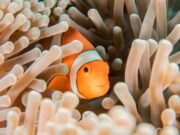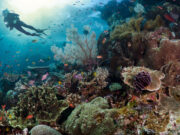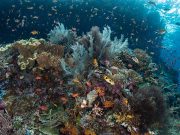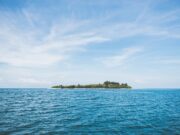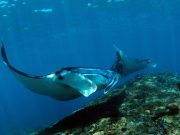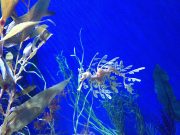Southeast Asia offers some of the world’s best dive sites for macro photography, featuring an incredible diversity of critters that thrive in the region’s warm, nutrient-rich waters. From pygmy seahorses and colourful nudibranchs to rare crustaceans and frogfish, these sites are a dream for divers with an eye for the minute details of the underwater world. Here’s a guide to some great dive sites for macro photography in Southeast Asia, featuring a mixture of well-known destinations and offbeat gems, along with tips on when to go, what critters to expect, and additional highlights in each area.
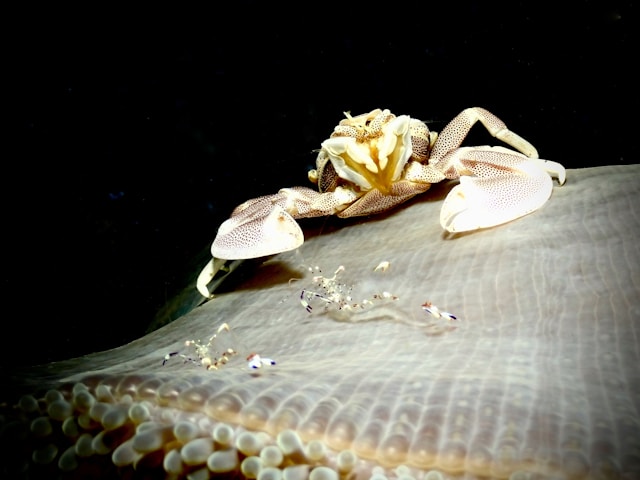
1. Lembeh Strait – North Sulawesi, Indonesia
Lembeh Strait is world-renowned for muck diving and hosts an extraordinary variety of rare macro creatures. The dark, sandy seabed hosts vibrant critters like the blue-ringed octopus, mimic octopus, and ornate ghost pipefish. Various species of nudibranch, frogfish, and hairy shrimp are also commonly spotted here. Beyond macro diving, North Sulawesi offers healthy coral reefs and stunning wall dives, such as in Bunaken National Park.
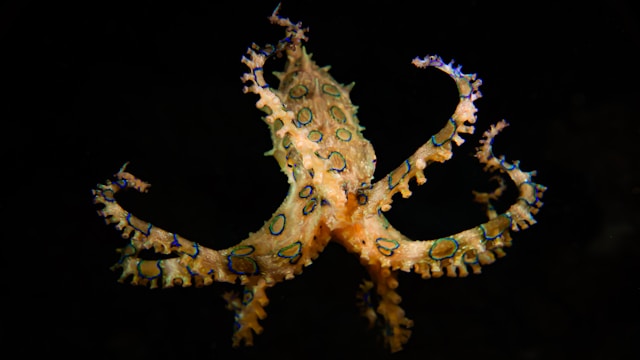
Kris-Mikael Krister
• Depth: 10-30 meters
• Average water temperature: 79-84°F (26-29°C)
• Experience level: Open Water Diver and up
• Best time to dive: August to October
2. Anilao – Batangas, Philippines
Anilao is a very popular destination for underwater photography due to its high critter density and accessible dive sites. Known for vibrant nudibranch populations, it’s also a great spot for rhinopias, bobtail squid, and mimic octopuses. Anilao’s reefs are colorful, making it ideal for mixed macro and wide-angle shots.
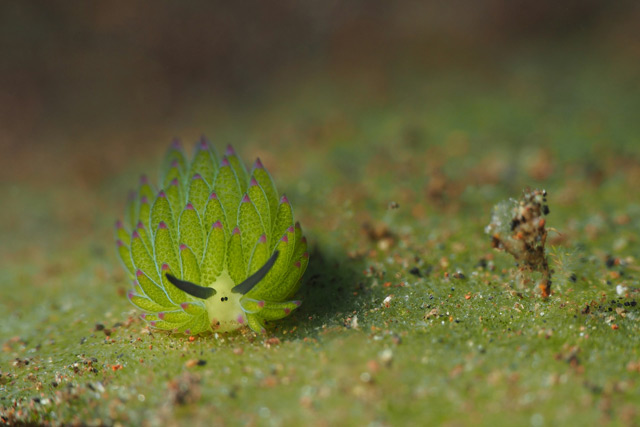
Anilao is primarily accessible via day trips or weekend getaways from Manila, with most diving done from day boats. The area also offers beautiful beaches, cultural excursions, and island-hopping activities.
• Depth: 5-30 meters
• Average water temperature: 78-84°F (25-29°C)
• Experience level: Open Water Diver and up
• Best time to dive: November to May
3. Secret Bay – Gilimanuk, Bali, Indonesia.
Secret Bay, known for its sandy seabed and abundant critter life, is a macro paradise for patient photographers. Expect to see frogfish, seahorses, pipefish, and nudibranchs. The calm waters and unique black sand provide a stark contrast for photographs. Located in northwest Bali, Secret Bay is accessible by shore entry. When not diving, explore Bali’s rich cultural offerings, such as temples, traditional crafts, and stunning natural scenery.

• Depth: 5-12 meters
• Average water temperature: 75-81°F (24-27°C)
• Experience level: Open Water Diver and up
• Best time to dive: May to November
4. Mabul Island – Sabah, Malaysia
Mabul Island, located near Sipadan, is one of Malaysia’s premier macro diving destinations, known for its muck diving. Its sandy bottoms and coral patches make it ideal for finding unique critters such as frogfish, flamboyant cuttlefish, blue-ringed octopus, and a wide variety of nudibranchs. The small size of the dive sites and the sandy terrain allow for slow, detailed exploration, making it an ideal spot for photographers seeking unusual subjects.

Diving around Mabul is primarily done via shore or day boat dives, and many divers choose to stay at nearby resorts that cater to Sipadan-bound divers. Outside of diving, Mabul offers a relaxed atmosphere with sandy beaches and opportunities to explore local Sea Gypsy communities.
• Depth: 5-20 meters
• Average water temperature: 80-86°F (27-30°C)
• Experience level: Open Water Diver and up
• Best time to dive: March to October
5. Tulamben – Bali, Indonesia
Tulamben, located on Bali’s northeast coast, is best known for the USAT Liberty wreck but also offers excellent opportunities for macro photography across its reefs and sandy areas. The USAT Liberty is encrusted with colorful coral and teeming with life, providing habitat for pygmy seahorses, frogfish, harlequin shrimp, and numerous species of nudibranchs. Additionally, Tulamben’s Coral Garden and Drop Off sites are ideal for spotting critters like ghost pipefish, dragonets, and mimic octopus.

Diving in Tulamben is primarily shore-based, with easy access to multiple dive sites directly from the beach. The calm, shallow conditions make it a favorite among photographers who want the flexibility to take their time with each shot. Outside of diving, Tulamben is a quiet, scenic destination where visitors can experience Bali’s authentic culture, visit nearby temples, or explore the island’s volcanic landscapes.
• Depth: 5-30 meters
• Average water temperature: 79-84°F (26-29°C)
• Experience level: Open Water Diver and up
• Best time to dive: April to September
6. Togean Islands – Central Sulawesi, Indonesia.
A lesser-known destination, the Togean Islands offer pristine waters and a wide range of macro species. Coral reefs host rare critters like flamboyant cuttlefish, octopuses and unusual crustaceans. Some reef sections also feature large populations of seahorses.

Accessible by liveaboard or multi-day excursions, the Togeans are a secluded paradise with beautiful beaches, lush jungles, and traditional fishing villages.
• Depth: 5-25 meters
• Average water temperature: 82-88°F (28-31°C)
• Experience level: Open Water Diver and up
• Best time to dive: March to November
7. Sogod Bay – Southern Leyte, Philippines.
Sogod Bay is a hidden gem that combines macro wonders with occasional pelagic sightings. Frogfish, nudibranchs, and pipefish are common, with rare encounters of rhinopias and pygmy seahorses. This site is ideal for macro photographers who enjoy a mix of coral and sandy bottoms. Diving is typically arranged as shore or day boat dives. Sogod Bay is quieter than many Philippine dive spots, perfect for relaxation or snorkeling with whale sharks (November to May).

• Depth: 5-30 meters
• Average water temperature: 79-84°F (26-29°C)
• Experience level: Open Water Diver and up
• Best time to dive: November to May
8. Koh Rong Sanloem – Cambodia
Koh Rong Sanloem, while less visited than many destinations, offers macro enthusiasts an excellent experience with diverse shrimp, small octopuses and various nudibranchs. The soft and hard corals support an array of smaller critters, perfect for those who prefer peaceful, less crowded dives. This location is off the beaten path, and non-diving visitors can explore sandy beaches and traditional villages.
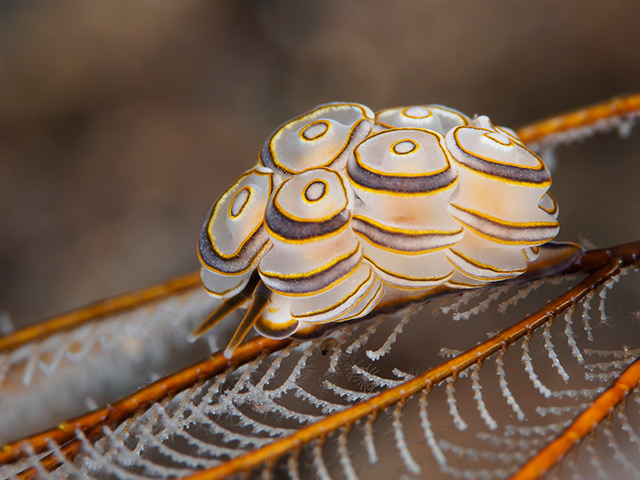
• Depth: 5-20 meters
• Average water temperature: 79-84°F (26-29°C)
• Experience level: Open Water Diver and up
• Best time to dive: November to May
9. Tasi Tolu – Timor Leste
Tasi Tolu offers an exciting array of macro critters in a largely undisturbed habitat. With muck dive conditions, expect to find seahorses, nudibranchs, rhinopias, and shrimp species. The site is relatively new to the dive world, adding a sense of adventure and discovery for divers.
Diving is shore-based and accessible.
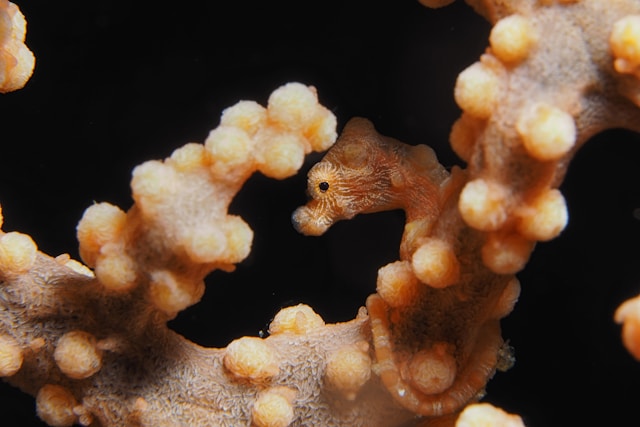
• Depth: 5-20 meters
• Average water temperature: 79-82°F (26-28°C)
• Experience level: Open Water Diver and up
• Best time to dive: April to November
10. Kimbe Bay – New Britain, Papua New Guinea.
Kimbe Bay is a paradise for macro photographers, offering pristine reefs with incredible biodiversity. Sites like Vanessa’s Reef and Inglis Shoal are well-known for housing critters like pygmy seahorses, dragonets, and a vast array of nudibranchs. The nutrient-rich waters attract rare species that are a delight to find.
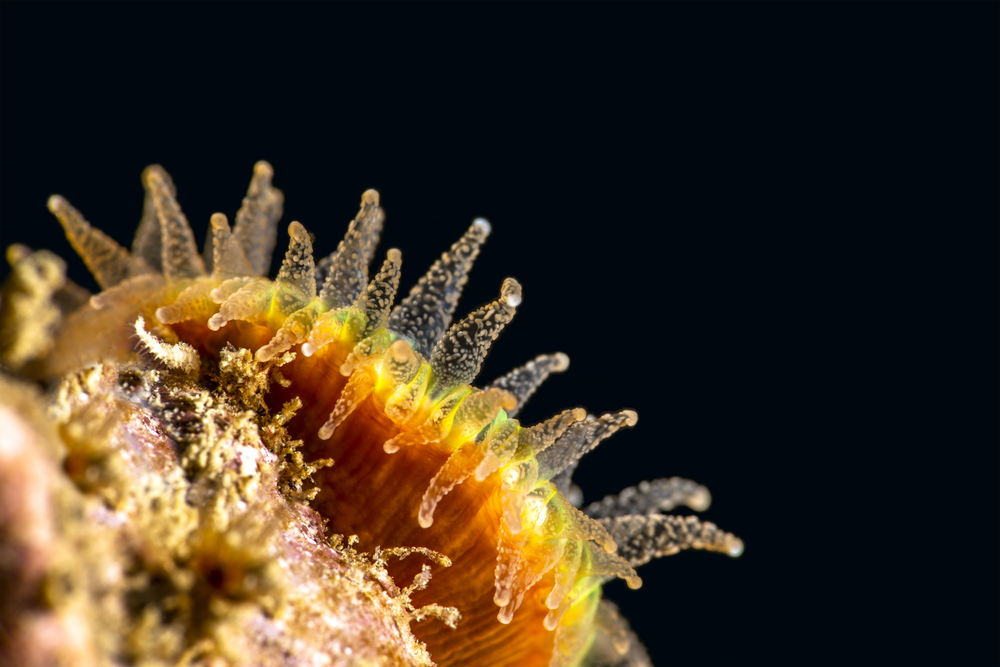
Accessible primarily by liveaboard, Kimbe Bay is remote and perfect for those looking to get off the beaten path. When not diving, visitors can explore volcanic landscapes, meet local communities, and enjoy the lush scenery.
• Depth: 10-35 meters
• Average water temperature: 80-86°F (27-30°C)
• Experience level: Advanced Open Water recommended
• Best time to dive: April to November
What Courses Do You Need for Macro Photography?
Whether you have just earned your diving license or are an experienced diver, there are some great courses to help you get the best shots and make the most of your macro diving experiences.

Consider taking a Perfect Buoyancy course to learn how to control your position without disturbing marine life or the seabed. An underwater photography dive specialty provides training on capturing the unique details of underwater creatures and mastering close-up shots. If you love learning about marine life, becoming an Ecology Specialty Diver is a great addition to your dive education.
This article was written by Kathryn Curzon, a dive travel writer for SSI.

